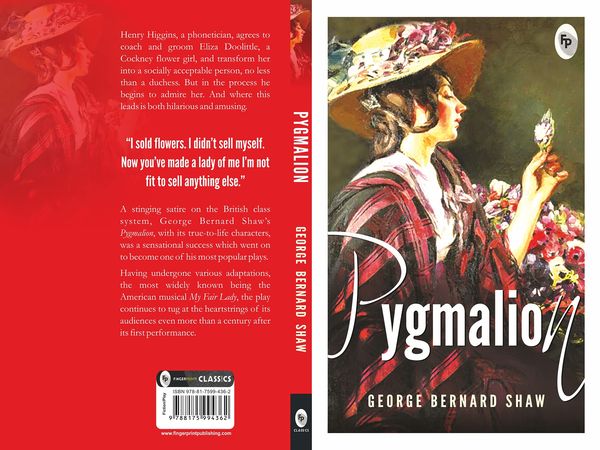Henry Higgins, a phonetician, agrees to coach and groom Eliza Doolittle, a Cockney flower girl, and transform her into a socially acceptable person, no less than a duchess. But in the process he begins to admire her. And where this leads is both hilarious and amusing.
“I sold flowers. I didn’t sell myself.
Now you’ve made a lady of me I’m not
fit to sell anything else.”
A stinging satire on the British class system, George Bernard Shaw’s Pygmalion, with its true-to-life characters, was a sensational success which went on to become one of his most popular plays.
Having undergone various adaptations, the most widely known being the American musical My Fair Lady, the play continues to tug at the heartstrings of its audiences even more than a century after its first performance.
About the Author
George Bernard Shaw was born on 26 July 1856 in Dublin, Ireland. His interest in reading developed at a very young age, and he familiarized himself with a wide range of literature.
In 1878, he made his first attempt at drama but left it unfinished. Immaturity (1879), his first complete novel, was not printed until 1930s. His next two novels, The Irrational Knot (1880) and Love Among the Artists (1881), also failed to find a publisher. Between 1886 and 1898, Shaw worked as an art critic, a music critic, and a theatre critic. His career as a playwright began in 1892 with the Widowers’ Houses and his first commercial success came with Arms and the Man in 1894. His biggest success came in 1897 with Richard Mansfield’s production of The Devil’s Disciple, a historical melodrama. Pygmalion (1912) first premiered in Vienna in 1913. A stinging satire on the British class system, it was a remarkable success. Shaw died on 2 November 1950, aged ninety-four.
In English dramatic history, Shaw’s career was the longest. His plays have their own distinct characteristics, and he is regarded as the greatest British playwright after Shakespeare. Pygmalion remains his most popular play.
- Weight : 147
- Breadth : 12.6
- Length : 19.6
- Height : 1






